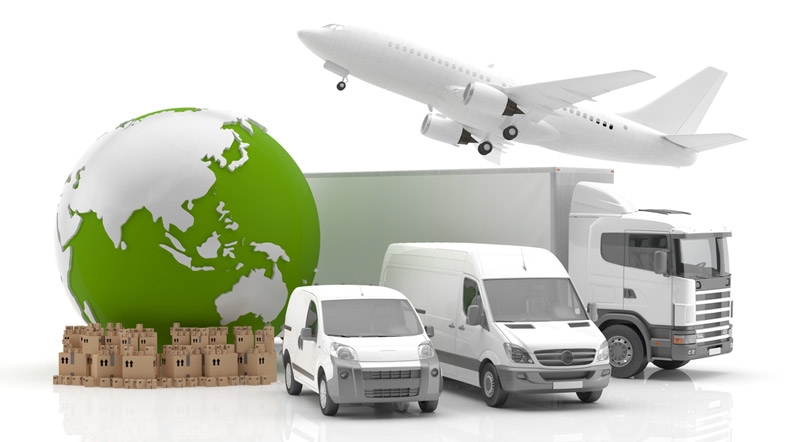Green Logistics in Cambodia: Trends and Technology
How Sustainability Is Driving Change in Cambodia’s Transport and Supply Chain Industry
As global industries shift towards eco-friendly practices, Cambodia’s logistics sector is also evolving. With growing pressure from international trade partners, rising fuel costs, and a national push for sustainability, green logistics is emerging as a key strategy to drive growth, reduce emissions, and future-proof operations.
In this article, we explore the current trends, technologies, and policy developments shaping the future of green logistics in Cambodia, and how foreign businesses can align their supply chain strategies with Cambodia’s environmental goals.
What Is Green Logistics?
Green logistics refers to the sustainable management of the flow of goods, with a focus on reducing environmental impact. This includes optimizing transportation routes, using energy-efficient vehicles, reducing packaging waste, and adopting digital tools that lower the carbon footprint of logistics operations.
For developing economies like Cambodia, green logistics offers a chance to balance economic growth with climate responsibility—especially as the country increases trade activities across ASEAN and beyond.
Key Trends Driving Green Logistics in Cambodia
1. Government Support for Environmental Goals
Cambodia has committed to reducing greenhouse gas emissions under its Nationally Determined Contributions (NDC) to the Paris Agreement. The Ministry of Public Works and Transport (MPWT) and the Ministry of Environment have been promoting green transport initiatives, including:
-
Encouraging the adoption of electric vehicles (EVs)
-
Promoting rail and waterway freight to reduce road congestion
-
Improving fuel standards and promoting energy-efficient engines
These initiatives are part of the broader Cambodia Climate Change Strategic Plan (CCCSP), which is steering multiple industries toward sustainability.
🌐 Learn more from the Cambodia Climate Change Alliance
2. Rising Demand for Eco-Friendly Warehousing
As Cambodia’s e-commerce and export sectors grow, so does the need for energy-efficient warehousing. Logistics firms are now investing in:
-
Solar-powered warehouses
-
LED lighting and smart sensors
-
Temperature-controlled systems with reduced energy usage
-
Rainwater harvesting and waste segregation facilities
Sihanoukville and Phnom Penh, home to major logistics hubs, are seeing increased interest in green infrastructure investments.
📎 Related reading: Container Handling and Warehousing in Sihanoukville Port: What You Should Know
3. Multimodal Transport and Route Optimization
One major opportunity in green logistics is the shift from road-heavy freight to multimodal logistics, which combines rail, sea, and inland waterways.
-
The Phnom Penh Logistics Complex (PPLC) and Sihanoukville Port expansions are enabling more efficient and lower-emission goods movement.
-
Use of transport management systems (TMS) is helping companies optimize delivery routes, reduce fuel use, and cut back on delays.
Digital logistics tools are also helping businesses plan more efficient last-mile delivery operations in urban areas, reducing the environmental impact of small parcel shipments.
4. Technology Integration for Greener Operations
Technology is playing a key role in the green transition. Cambodian logistics firms and agents are investing in:
-
AI-based route optimization software
-
Fleet tracking systems for monitoring emissions and performance
-
Blockchain-based supply chain management for transparency
-
Cloud-based inventory systems to avoid overstocking and waste
Platforms like Cambodia-Agent.com help foreign companies integrate with tech-ready local logistics providers who offer real-time tracking and carbon accounting services.
💡 Also read: How Technology and AI Are Changing Logistics in Cambodia
Challenges to Green Logistics in Cambodia
While there’s positive momentum, Cambodia still faces key challenges in fully implementing green logistics:
-
Lack of nationwide EV infrastructure for commercial fleets
-
Limited rail connectivity in some provinces
-
Cost barriers for small logistics firms to upgrade equipment
-
Need for stronger policy enforcement and incentives
However, foreign investors and multinational companies can help bridge these gaps through public-private partnerships, knowledge-sharing, and demand for higher environmental standards in their supply chains.
How Foreign Businesses Can Benefit
Companies that align with Cambodia’s green logistics efforts can benefit through:
-
Improved brand image and ESG compliance
-
Cost savings from energy and fuel efficiency
-
Smoother regulatory approvals when working with eco-conscious agents
-
Better alignment with international buyers and trade standards
Partnering with a logistics facilitator like Cambodia-Agent.com ensures foreign brands are connected with green-compliant warehouses, shipping routes, and customs processes.
📘 Related: The Role of Cambodia-Agent.com in Streamlining Logistics for Foreign Brands
Conclusion: A Greener Logistics Future Is Possible in Cambodia
As Cambodia looks to modernize its logistics sector while meeting climate commitments, green logistics is no longer optional—it’s essential. With the right mix of technology, government support, and foreign investment, Cambodia can transform its supply chain ecosystem into a model of sustainable efficiency.
For businesses looking to enter the Cambodian market, now is the time to embrace eco-friendly logistics strategies, work with experienced agents, and be part of Cambodia’s green future.
